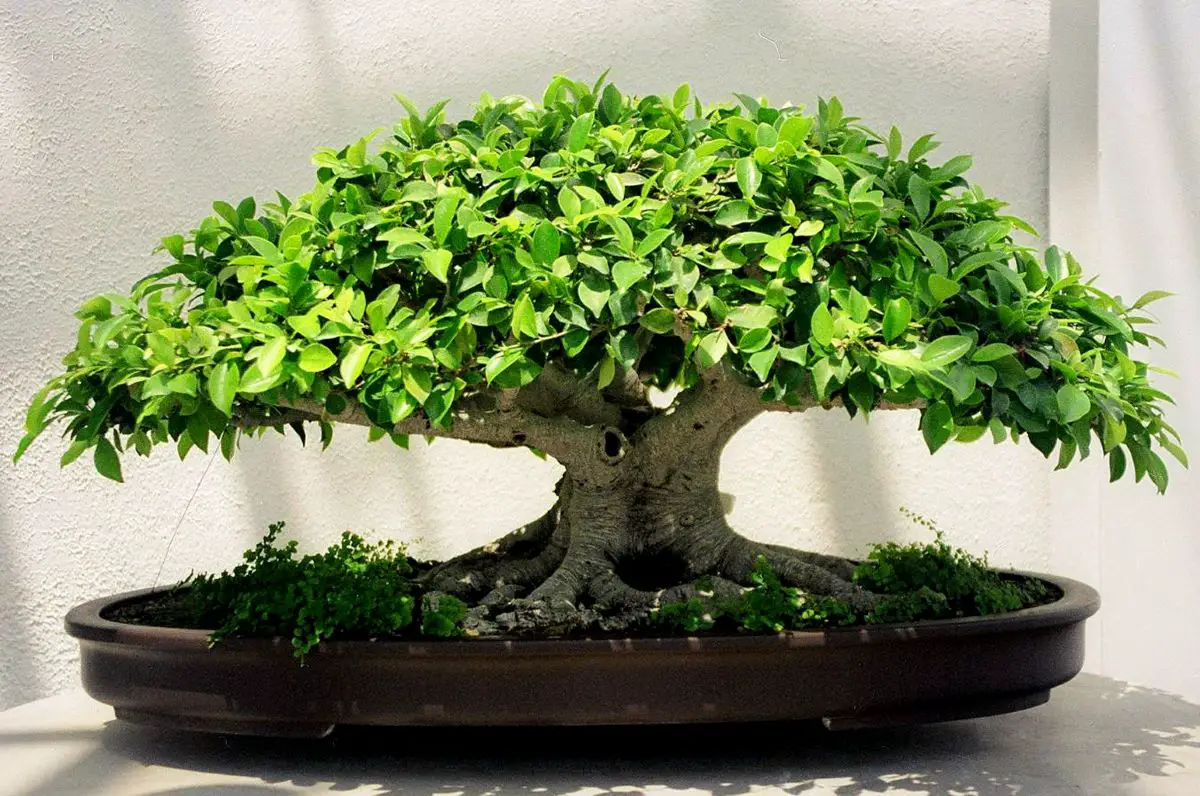

Image – Flickr / Grufnik
The bonsai cut figs It is usually the first gift that is given to someone who has expressed an interest in these types of plants, or the one that is bought when you want to start caring for these miniature trees. But how is it to be cared for?
The truth is that, although we are talking about a relatively simple species to maintain, it is not as resistant as it is thought; especially when compared to, for example, elms. For this reason, then we will explain in detail everything about its maintenance.
5 things to know about him cut figs
When a bonsai is acquired, regardless of the type it is, it is important to know some characteristics of the species, since it may be the case that it is deciduous and we mistakenly think that when the leaves fall it is because it is dying. Thus, from cut figs You have to know the following:
- It is an evergreen treethis means that it remains evergreen. But nothing else. The leaves have a limited life expectancy, but if the plant is healthy, new ones will emerge as they fall.
- If allowed to grow on its own, it can be up to 10 meters tall, but when working as bonsai it is almost always a rather small bonsaiup to 40 centimeters high.
- The leaves are glabrous-greenso if they change color it is because they have a problem, or because they are aging.
- It can bear the cold, although frost hurts it. Even so, it is a good tree to grow outdoors all year round in mild-temperate climates, such as the Mediterranean on the coast.
- Tolerates pruning, as long as it is not excessive. In fact, pinching is better than pruning itself, since it loses less sap and therefore recovers better.
How to care for bonsai cut figs?


Image – Wikimedia Commons / Greg Hume
We have our bonsai, but how do we have to take care of it so that it stays green? During its maintenance many problems can arise, but there are several things that have to be done to avoid them:
Location
For now, The first thing to do is find a place -outside- with lots of lightbut without the sun hitting it directly. Surely it will come from a nursery where they had it in shade / semi-shade, so if we exposed it to the king star directly, its leaves would burn and fall.
Later, when one or two months have passed, we will begin to put it in a sunny area for a longer time, so that it can get used to it.
Can it be kept indoors?
Not ideal. All Ficus are trees that want and need a lot, a lot of light, more than they can capture indoors. In addition, the air currents generated by the air conditioner and fans dry their leaves causing them to fall prematurely.
We only advise growing it indoors during winter, and only if the temperature drops below 0 degrees, as the cut figs it is sensitive to cold. If the climate is warm all year round, it is better to keep it outside always.
How to water a bonsai cut figs?
It must be watered throughout the yearwith a specific bonsai watering can filled with rainwater, or soft water (low in lime) from the “top” (wetting the substrate). We will water it about twice a week in spring, a little more in summer, and we will reduce watering again in autumn and winter.
It is important that the substrate is not dry too long, as it would not be good. It is a tree that drought can cause many problems, hence you have to be a little aware of watering. But that yes: it is necessary to avoid watering in excess, because otherwise its roots would die.
Substrate and transplant
The most advisable substrate is the following: 70% akadama (for sale here!) mixed with 30% kiryuzuna (for sale here!) or pumice (for sale here!). Now, a specific one for bonsai, or even universal cultivation substrate (for sale here!) mixed with 30% perlite (for sale here!).
On the other hand, if we talk about transplantation, we will do it in the spring, every two or three years.
How and when to pay a bonsai cut figs?


Image – Flickr / Henryr10
To get it healthy and green, it is important that it is paid during spring and summer. We will use a specific fertilizer for bonsai, and we will follow the manufacturer’s instructions. In this way, it will be able to grow without difficulty.
Bonsai pruning
There are several types of pruning:
- The training: it is done at the end of winter. It consists of eliminating entire branches and trimming those that are necessary to give a definite style, which in the present case is usually broom (straight trunk with a branched crown that forms an almost perfect semicircle) and moyogi (sloping trunk with branches that meander up to the top).
- The maintenance: or pinched. It consists of removing tender, green tissue with scissors. It is done throughout the year in order to maintain its style and shape.
- Defoliation: consists of totally or partially removing the foliage.
When to defoliate a cut figs?
Defoliation is done so that the plant removes smaller leaves, and since the cut figs they are quite large, defoliates in spring. For this almost entire leaves are removed; you just have to leave a little less than the half that joins the branch.
It is not necessary to defoliate the bonsai completely, as we remember that it is an evergreen species, and we could lose it if we leave it without leaves.
Where to buy a bonsai from cut figs?
You can buy it from here:
